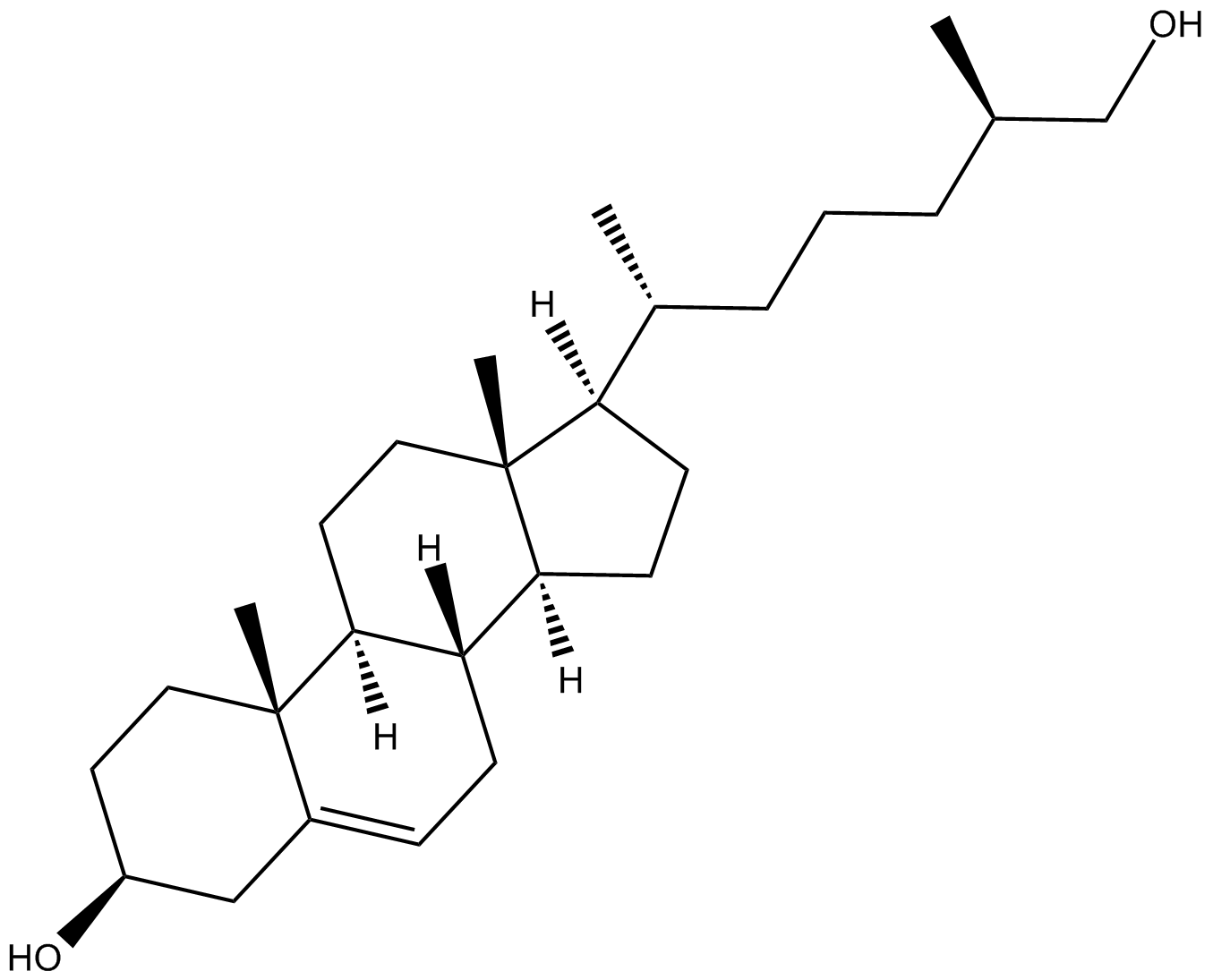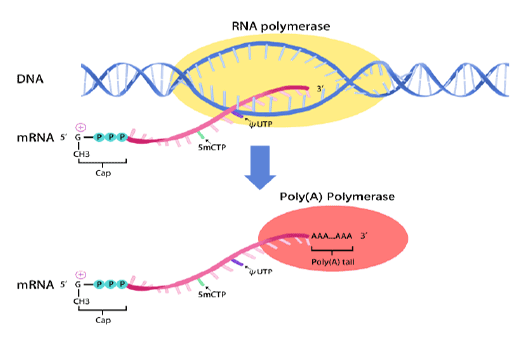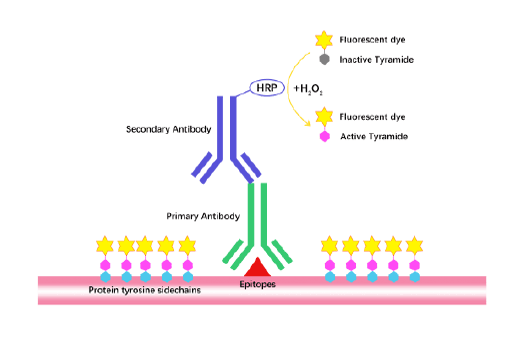25(R)-27-hydroxy Cholesterol
25(R)-27-hydroxy Cholesterol ((25R)-26-hydroxy cholesterol) is the naturally occurring isomer of the endogenous the endogenous 27-hydroxycholesterol. And approximately 80% is the naturally occurring (25R) isomer [1][2]. 27-hydroxycholesterol is an endogenous ligand of liver X receptor with EC50 values of 85 and 71 nM for LXRα and LXRβ, respectively [2][3].
The liver x receptors (LXRα and LXRβ) are nuclear hormone receptors that are important regulators of cholesterol and fatty acid metabolism [2].
27-hydroxycholesterol is synthesized by a mitochondrial P-450 enzyme that appears to be widely distributed in tissues [1]. 27-hydroxycholestero1 can inhibit both cholesterol synthesis and low density lipoprotein (LDL) receptor activity [1]. In cholesterol-loaded human macrophage cells, 27-hydroxycholestero1 is an endogenous ligand for LXRs with Kd values of 85 and 71 nM for LXRα and LXRβ, respectively [3]. In human fibroblasts, low density lipoprotein cholesterol is converted to 27-hydroxycholesterol, which was sufficient to reduce the activity of HMG-CoA reductase [4].
References:
[1]. Javitt NB. 26-Hydroxycholesterol: synthesis, metabolism, and biologic activities. J Lipid Res. 1990 Sep;31(9):1527-33.
[2]. Fu X, Menke JG, Chen Y, et al. 27-hydroxycholesterol is an endogenous ligand for liver X receptor in cholesterol-loaded cells. J Biol Chem. 2001 Oct 19;276(42):38378-87.
[3]. Zhang Y, Mangelsdorf DJ. LuXuRies of lipid homeostasis: the unity of nuclear hormone receptors, transcription regulation, and cholesterol sensing. Mol Interv. 2002 Apr;2(2):78-87.
[4]. Axelson M, Larsson O. Low density lipoprotein (LDL) cholesterol is converted to 27-hydroxycholesterol in human fibroblasts. Evidence that 27-hydroxycholesterol can be an important intracellular mediator between LDL and the suppression of cholesterol production. J Biol Chem. 1995 Jun 23;270(25):15102-10.
| Physical Appearance | A crystalline solid |
| Storage | Store at -20°C |
| M.Wt | 402.7 |
| Cas No. | 20380-11-4 |
| Formula | C27H46O2 |
| Synonyms | (25R)-26-hydroxy cholesterol |
| Solubility | ≤20mg/ml in ethanol;0.1mg/ml in DMSO;2mg/ml in dimethyl formamide |
| Chemical Name | (25R)-cholest-5-ene-3β,26-diol |
| SDF | Download SDF |
| Canonical SMILES | C[C@H](CCC[C@@H](C)[C@@H](CC1)[C@@](C)(CC2)[C@@H]1[C@H]1[C@H]2[C@@](C)(CC[C@@H](C2)O)C2=CC1)CO |
| Shipping Condition | Small Molecules with Blue Ice, Modified Nucleotides with Dry Ice. |
| General tips | We do not recommend long-term storage for the solution, please use it up soon. |
Quality Control & MSDS
- View current batch:
Chemical structure









